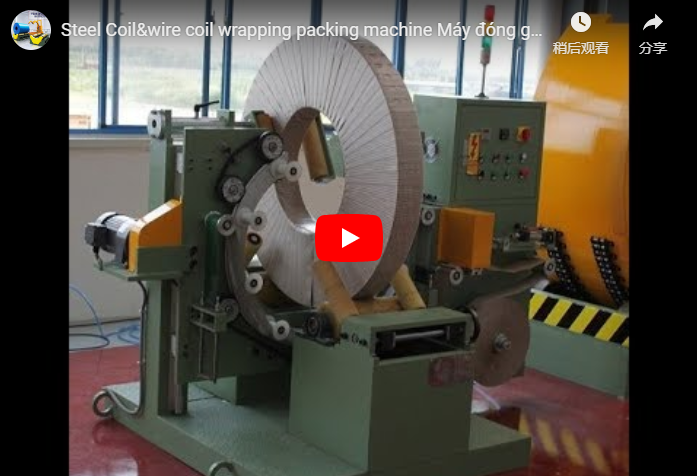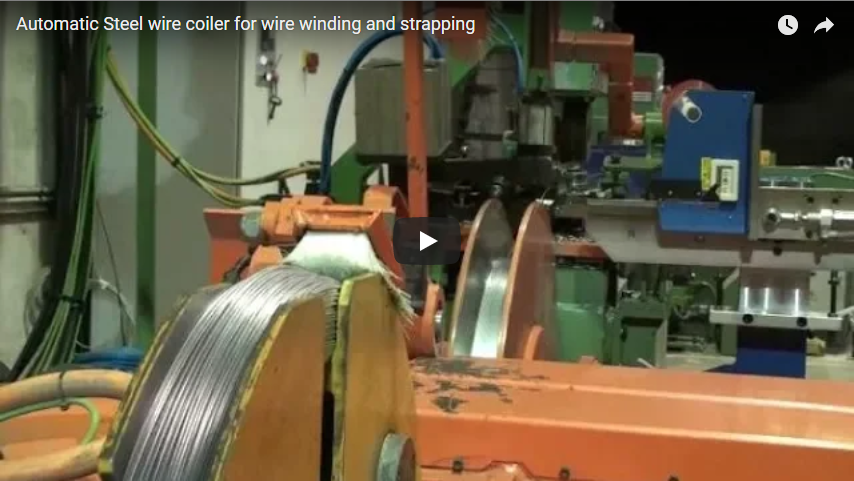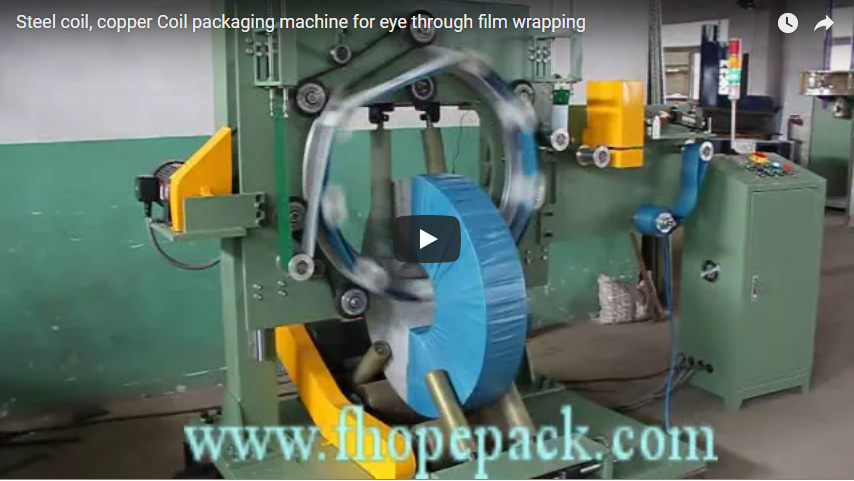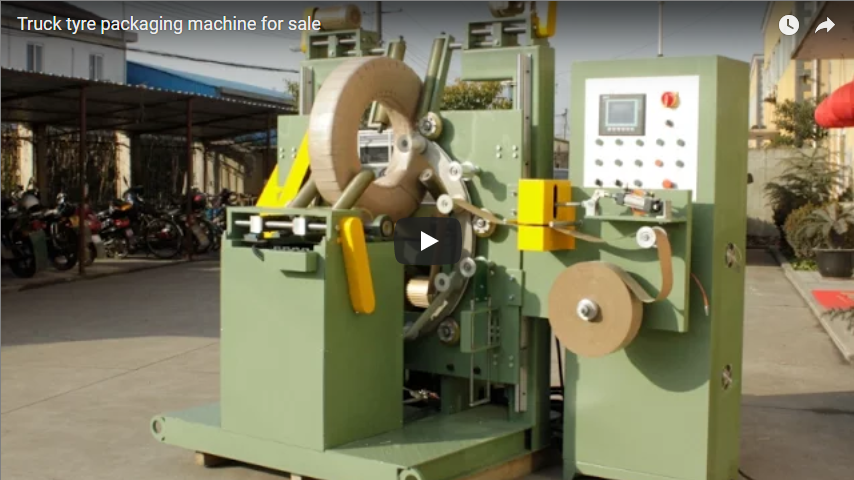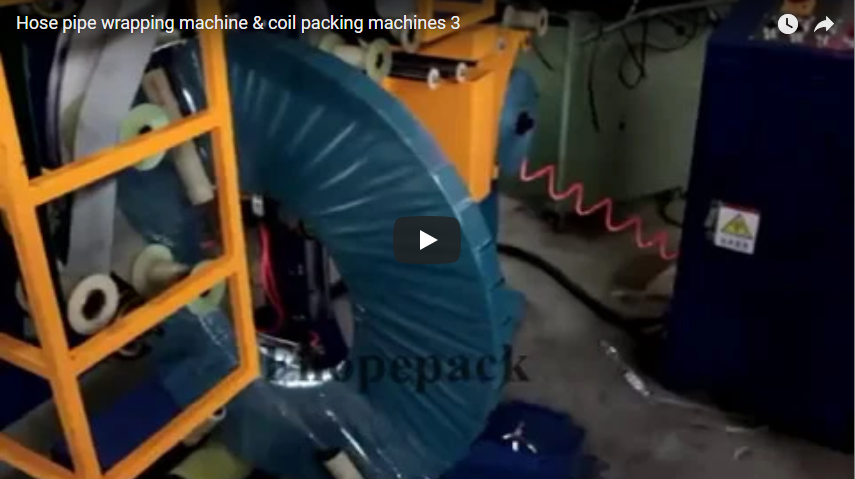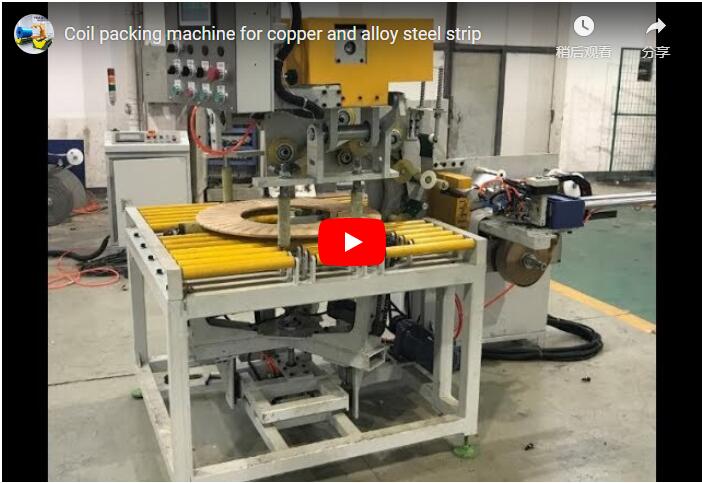The rigorous demands of the steel industry necessitate robust, efficient, and precise packaging solutions to protect valuable coils during handling, storage, and transportation. Modern automated packaging lines represent a significant leap forward, integrating multiple technologies to ensure coil integrity and streamline operations. This article delves into the design, components, technical specifications, and operational advantages of advanced inline steel coil packaging systems, focusing on the critical roles of strapping machines.
1. System Architecture: The Integrated Steel Coil Packaging Line
An optimized steel coil packing line is more than just a collection of machines; it's an integrated system meticulously designed for seamless workflow. Key components typically include:
- Conveying Systems: Heavy-duty conveyors (roller or chain type) designed to handle significant coil weights and facilitate smooth transitions between stations.
- Centering Devices: Ensure precise coil positioning prior to wrapping or strapping, crucial for consistent package quality.
- Eye Stretch Wrapper: Applies stretch film through the eye of the coil, protecting inner and outer surfaces from environmental factors and providing initial stability.
- Strapping Stations: Incorporate specialized machines for applying straps radially (through the eye) and circumferentially (around the outer diameter).
- Control System: PLC-based controls orchestrate the entire line, managing sequencing, machine parameters, and safety interlocks.
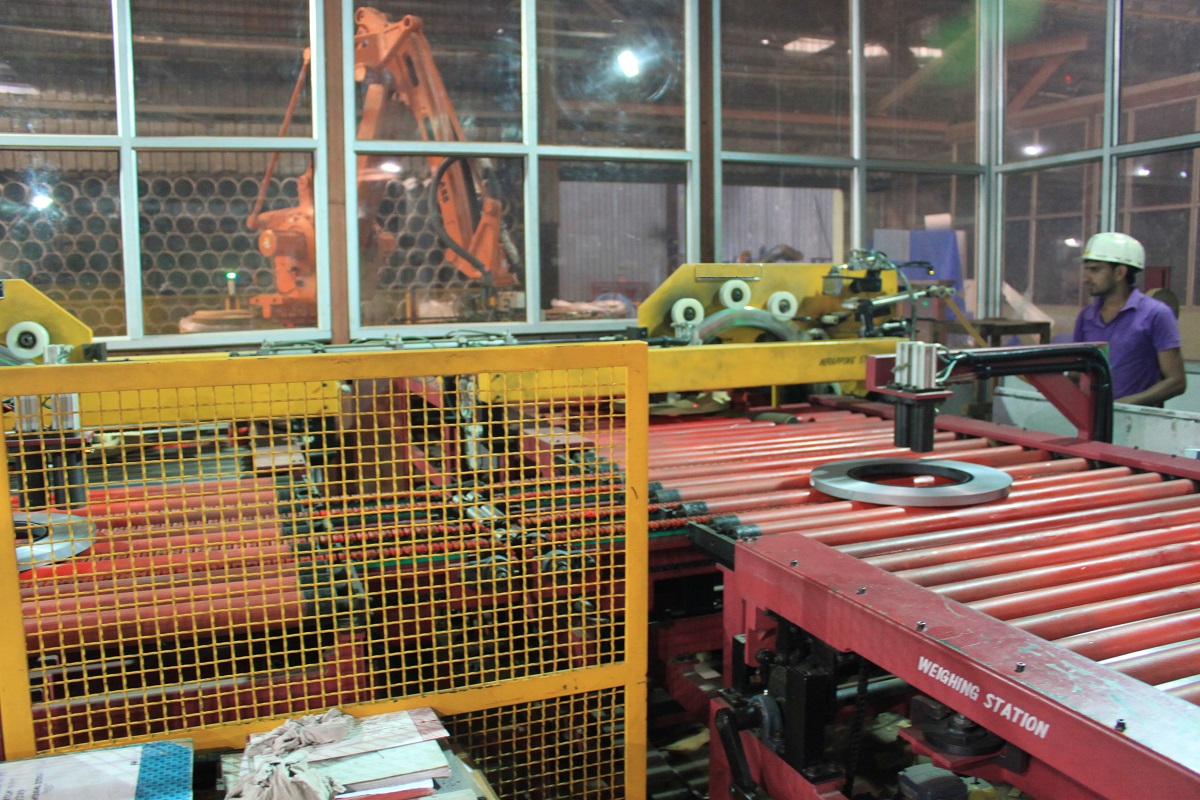
This integrated approach minimizes manual handling, reduces cycle times, and enhances overall packaging consistency.
2. Core Strapping Technologies: Precision and Security
Strapping is fundamental to securing steel coils. Two primary methods are employed in automated lines:
2.1. Radial Strapping Machines
- Function: These machines feed strap material (typically PET or steel) through the eye of the coil and secure it.
- Design: Often feature a track or chute system that guides the strap through the coil's inner diameter. A specialized strapping head performs tensioning, sealing (heat seal for PET, mechanical crimp for steel), and cutting.
- Benefits: Provides excellent stability by preventing coil unwinding or telescoping. Essential for maintaining the coil's shape.
- Typical Data:
- Strap Tension: Adjustable, often ranging from 500 N to over 15,000 N depending on coil size and strap type.
- Cycle Time: Can achieve rates of 15-30 seconds per strap, depending on coil size and machine configuration.
2.2. Circumferential Strapping Machines
- Function: Apply straps around the outside circumference of the coil.
- Design: Utilize a strap track that encircles the coil. The strapping head tensions, seals, and cuts the strap on the coil's outer surface. Multiple straps can be applied at pre-defined positions.
- Benefits: Unitizes the coil, prevents edge damage, secures protective packaging materials (like edge protectors), and facilitates handling (e.g., crane hooks).
- Typical Data:
- Number of Straps: Configurable, typically 2 to 6 straps per coil.
- Positioning Accuracy: +/- 5-10 mm to ensure consistent strap placement.
2.3. Strapping Material Selection: PET vs. Steel
- PET (Polyester) Strapping: Offers high tensile strength, good elongation and recovery (maintains tension), corrosion resistance, and is often safer to handle. Preferred for many applications, especially where surface marking is a concern.
- Steel Strapping: Provides maximum tensile strength and rigidity, suitable for extremely heavy or sharp-edged coils. Can sometimes cause surface indentation or require more careful handling.
The choice depends on coil weight, handling methods, customer requirements, and cost considerations. Modern strapping heads are often designed to handle either material with minimal changeover.
3. Design, Structure, and Customization
Robustness and reliability are paramount in steel mill environments. These packaging lines feature:
- Heavy-Duty Construction: Fabricated from thick-gauge steel with reinforced frames to withstand high loads and continuous operation.
- Modular Design: Allows for flexibility in layout configuration, easier maintenance access, and potential future upgrades.
- Safety Integration: Comprehensive safety features include light curtains, emergency stops, physical guarding, and interlocked access points compliant with industry standards.
- Customization: Lines are tailored to specific needs:
- Coil Dimensions (ID, OD, Width)
- Coil Weight (ranging from a few tonnes to over 30 tonnes)
- Required Throughput (coils per hour)
- Available Floor Space and Existing Infrastructure
- Specific Packaging Requirements (e.g., edge protection application, labeling).
4. Automation Levels and MES Integration
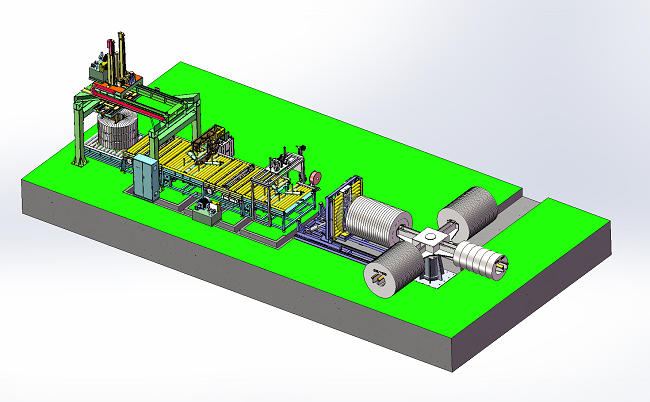
Modern packaging lines operate with varying degrees of automation, often categorized as:
- Level 1 (Basic Automation): Individual machines operate automatically, but sequencing and data handling are minimal.
- Level 2 (Supervisory Control): Centralized HMI control, recipe management for different coil types, basic production tracking.
- Level 3 (Full Integration): Seamless communication with the plant's Manufacturing Execution System (MES) and potentially ERP systems.
MES Integration Benefits:
- Real-Time Data Exchange: Coil ID, dimensions, weight, and required packaging specifications are received directly from the production line or MES.
- Automated Recipe Selection: The line automatically configures wrapping and strapping parameters based on coil data.
- Production Reporting: Packaging status, material consumption, and cycle times are reported back to the MES.
- Traceability: Creates a digital record linking the packaged coil to its production and quality data.
- Efficiency Monitoring: Enables calculation of Overall Equipment Effectiveness (OEE) and identification of bottlenecks.
This digital connectivity transforms the packaging line from isolated equipment into an intelligent node within the broader manufacturing ecosystem, driving efficiency and informed decision-making.
5. Technical Data Snapshot (Illustrative Ranges)
| Parameter | Radial Strapper | Circumferential Strapper | Eye Wrapper |
|---|---|---|---|
| Typical Cycle Time | 15-30 sec/strap | 15-30 sec/strap | 60-120 sec/coil |
| Max Coil Weight | Up to 40+ tonnes | Up to 40+ tonnes | Up to 40+ tonnes |
| Strap/Film Type | PET / Steel | PET / Steel | LLDPE Stretch Film |
| Strap Tension | 500 - 15,000+ N | 500 - 15,000+ N | N/A (Film Stretch) |
| Position Accuracy | +/- 10 mm | +/- 10 mm | N/A |
| Control System | PLC | PLC | PLC |
Note: Actual specifications vary significantly based on machine model and application requirements.
6. Operational Insights and User Experience
From an operational standpoint, key considerations include:
- Reliability: Machines must withstand harsh mill environments with minimal downtime. Robust components and preventative maintenance schedules are crucial.
- Ease of Maintenance: Modular design, accessible components, and clear diagnostics via the HMI simplify troubleshooting and repairs.
- User Interface (HMI): Intuitive touch-screen interfaces allow operators to monitor status, adjust parameters (with appropriate authorization), manage recipes, and view alarms.
- Strap/Film Changes: Efficient systems for loading new coils of strapping or rolls of stretch film minimize changeover time. Automatic strap feeding mechanisms are standard.
- Impact: A well-functioning automated line directly translates to reduced packaging costs, lower risk of product damage during transit, improved worker safety, and consistent package appearance.
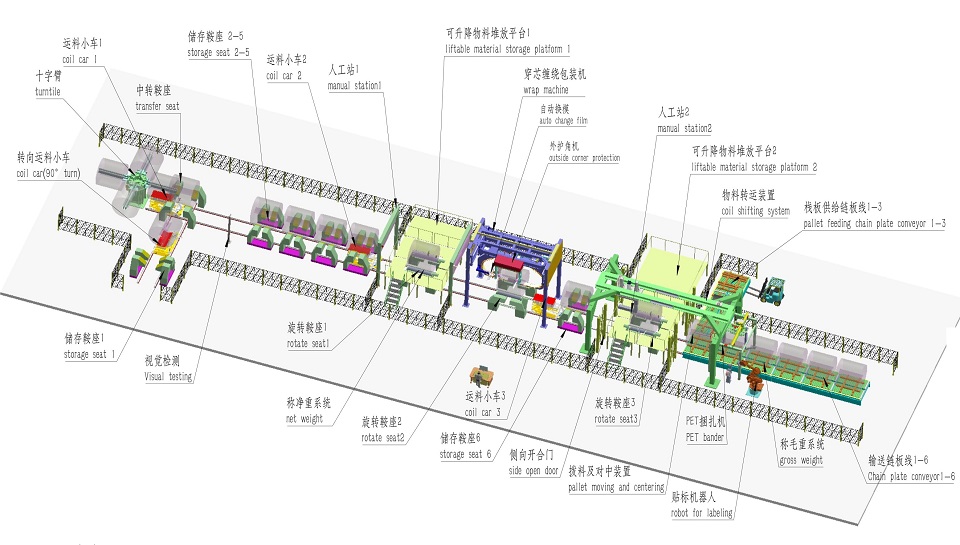
7. Conclusion: Enhancing Efficiency and Precision in Coil Packaging
Inline steel coil packaging lines integrating eye wrappers and advanced radial/circumferential strapping machines offer a powerful solution for modern steel producers. By leveraging automation, robust mechanical design, precise control systems, and seamless data integration with MES platforms, these systems deliver significant improvements in:
- Efficiency: Reduced cycle times and labor requirements.
- Precision: Consistent strap placement and tensioning.
- Protection: Enhanced coil integrity during handling and shipping.
- Safety: Minimized manual intervention in potentially hazardous operations.
- Traceability: Improved data management and quality control.
Investing in such technology is crucial for maintaining competitiveness, ensuring product quality, and optimizing logistical operations within the demanding steel industry.

